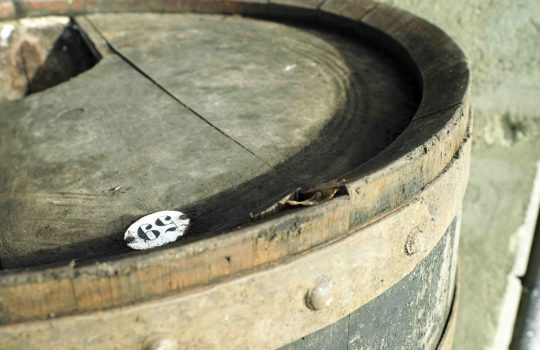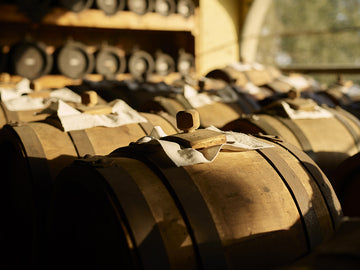
According to Italian law, Traditional Balsamic Vinegar of Reggio Emilia DOP (ABTRE) is a food condiment (not a vinegar, even if you find the word “Aceto” in the name) that follows a rigorous production specification ( download it here ). The DOP was recognized in 2000.
It was a “ Medicinal Balm ”. It goes without saying that it was considered such for its exquisite organoleptic, nutritional and qualitative qualities as well as for the strong symbolic charge that only an extraordinary aging could give.
Despite its ancient origins ( 1046 , the first document that speaks of a “ perfect vinegar” contained in small barrels and 1747 the first document that speaks of “Balsamic” as opposed to common vinegar, both in Reggio Emilia ), there are NO old recipes.
It was NOT an ingredient, much less a product used daily. It was something special, unique. An elixir.
Explaining instead how to do ABTRE is an undertaking that cannot be explained in FEW words and that, above all, cannot be explained ONLY in words. Experience, from this point of view, plays a fundamental role.
To simplify, we can establish 4 macro-points to take into consideration and to be considered essential:
1 . BATTERY PREPARATION
2 . COOKING THE MUST
3 . BATTERY STARTING
4 . TOPS AND WITHDRAWALS
Apologizing in advance for the possible summary of the descriptions, what follows is intended to be only a path to get to know the work that is hidden behind a vial of Traditional Balsamic Vinegar.
Before continuing, allow me a series of warnings : everything described corresponds to the "should be" and the "should be done", as it has come down to us from tradition and secular documents, everything revised and in light of numerous and continuous analyses and in-depth studies... everything that follows therefore corresponds to the optimum in a relationship between history/final purpose.
Given the high number of families with a passion for Balsamic Vinegar, it may well be that each one has their own procedure or secrets that they consider the best... so be warned that a real Balsamic Bible has not yet been written and perhaps never will be (even if some nice publications have been made and can be a very valid starting point).
The only thing that can and must be stated with certainty today is that: " Balsamic Vinegar is obtained through the acetification, maturation and aging of cooked must, in batteries of barrels of decreasing capacity and of different woods ."
This statement should then be completed and enriched with all those details that make the difference between a “so-so” Balsamic and a superlative one. For example, the must should be concentrated through “cooking over a direct flame and in the open air” (i.e., concentration by cooking), but the must can also be cooked using a boiler with a cavity in order to attenuate (almost eliminate) the caramelization of the sugars. Absolutely no to the “concentrated must” typical of large cellars (concentrated under pressure) usually used to enrich the musts.
The barrels should be made of different types of wood, however, sets made up of barrels made of just a couple of types of wood are also used, especially now, with the huge spread of “regenerated” sets, that is, obtained from disused oak barrels, dismantled and rebuilt as small barrels.
Perhaps some producers believe that many of the things that fall under the “should be” are a waste of time and money because, in the end, the end customer would not be able to appreciate the difference between a Balsamic produced according to all the dictates compared to one produced following only the very general 4 Commandments. This could also be true. But it is here, in the choice between one way of production and another, in this narrow space, that a personal choice must be made that must ignore the purpose and embrace the personal satisfaction of doing things as one feels, without shortcuts.
Before continuing, we recommend that you take a look at this series of comprehensive and informative video resources.

1 . BATTERY PREPARATION
The “ Battery ” is the minimum production unit for producing Traditional Balsamic Vinegar.
Without the battery , that is, the series of barrels made of different woods and with decreasing capacity , Traditional Balsamic Vinegar cannot be made.
The production specification requires at least two barrels, of decreasing capacity, with at least two different wood essences.
Nobody, or very few producers, use only three barrels. The risk would be that in the 12th year it would not pass the organoleptic test.
Probably the most widespread classic battery is made up of 5 small barrels plus, perhaps, a top barrel (the “abbess” is usually a large barrel, a barrique for example),
Generally, the longer the battery, the better. This is because the “new” product added upstream takes longer to arrive in the initial barrel (the smallest) and consequently vary its content.
Used barrels are better , ONLY IF they are healthy, not dry, destroyed, etc. In short, if the wood has previously contained something, it releases its perfumes and aromas better , but if to achieve this we have to risk having smells, losing all the product drop by drop, etc. Well then we might as well get new ones.
The different wood essences are:
– oak and chestnut (the most frequent)
– ash
– acacia
– mulberry (rare today)
– cherry tree
– juniper (typical of Balsamico Reggiano, with a characteristic pungent aroma)
As for scalarity, simplifying it could be said that the first barrel, the smallest, is not that “useful” if its capacity is less than 10 or 8 liters. Or in any case, you should pay a lot of attention because it would concentrate the product a lot.
Starting from the smallest, you should therefore go up in a “more than proportional” way, so that as you grow in the battery, the product available is abundant.
The risk, by increasing the capacity of the barrels slightly, is that while we are topping up we will take too much, going below half of the barrel, in order to bring the Balsamic back to the original level.
SANITIZATION OF THE BARRELS
The most natural method to sanitize the barrels is undoubtedly that of using boiling water + 10% salt.
With this solution, by filling the barrels well, sealing them and letting it cool, there is practically the certainty that many of the bacteria will be eliminated.
Once cooled, they are emptied, left to dry thoroughly in the air and you can proceed with the acetification phase.
A valid alternative, which we often use in the case of extraordinary operations (and very useful to avoid that the barrel, if left empty for a while, may leak because the wood has dried out), is the use of high temperature steam for 10-15 minutes.
ACETIFICATION OF THE BARRELS
The acetification of the battery is obtained by filling the barrels (100% or 50% by rotating the barrels often/every day) with “dry” wine vinegar, the strong one, and has the following purpose:
“Load” the wood with acetobacteria for the development of the necessary bacterial colonies. Specifying that there is no need and must not be a “mother” in the classical sense, the necessary wine vinegar must not be an “old” product and therefore discharged from the point of view of the vitality of the acetobacteria. It is much better to use a product with acidity even relatively low (let's say around 5%) BUT still alive, vital . This is because the acetobacteria must create the ideal, active environment to be able to help the acetification of the maturing product.
The fact that, in my opinion, it is not good (as was perhaps once claimed) to use a vinegar with a very high acidity is due to:
a- the acetobacteria are incompatible with those that then populate the must/balsamic vinegar that will go into the barrel
b- any “sanitization” of the wood is not guaranteed by the high acidity, the one seen previously is much more useful.

2 . COOKING THE MUST
The cooking of the must is without a doubt the fundamental part in the preparation of the basic ingredient of Traditional Balsamic Vinegar. From this we obtain the COOKED MUST , which after fermentation and acetification, will mature and age in the barrels for a long time, until it becomes that precious nectar that we all know.
Cooking grape must is a practice that is as old as the concept of “vinegar in general” . In fact, it dates back to the Romans.
We find in the Georgics of Publius Virgil Maro, around 30 BC:
” full length * cantú solo laborem áut dulcís mustí * Volcáno décoquit úmor(em) ét foliís undám * trepidí despúmat äéni … ”
Meanwhile the wife, consoling herself with song during the long work, weaves the cloth with her sharp shuttle, or cooks the sweet juice of the must with Vulcan (= with fire) and foams the surface of the boiling cauldron with leaves.
In essence it was originally SAPA (from the Latin “Flavour”), now Saba
The objectives of cooking are to:
– concentrate by evaporation (increases the density in terms of percentage of sugar – glucose and fructose)
– browning of the product + classic caramel flavour and aroma = caramelisation of the sugars
– pasteurization of the must, which then becomes a breeding ground for DIFFERENT and NEW yeasts and acetobacteria
IN SUBSTANCE, COOKED MUST IS A NEW AND DIFFERENT RAW MATERIAL TO THE INITIAL MUST.
HOW AND HOW MUCH TO COOK
In recent years there has been a lot of talk about long cooking times, HMF (hydroxymethyl)FURFURALS, even the “toxicity” of must cooked for too long (see, by the way, all the research from the University of Reggio Emilia and Modena)
Now, the question is simple:
1 – the DA concentration/density , ONE of the VARIOUS objectives of the finished product, has come to be, in the last 30-40 years, THE ONLY purpose and evaluation parameter of *Balsamic*. To the detriment of acidity
2 – density is obtained in two main ways:
a- aging in the barrels in descending order of the batteries, in particular the smaller barrels concentrate thanks to the great micro-oxygenation through the (lots of) wood in contact with the product (it takes years)
b – by cooking the starting must a lot, “pulling” it – through evaporation of the water – to increasingly higher densities (requires hours)
3 – the quickest solution ( cooking ) was obviously preferred but since no shortcut has only positive consequences, it led to a real “catastrophe”:
a- exaggerated density in the final barrels, zero acidity (and above all) –> crystallization of the Balsamic (a bit like when certain honeys crystallize because they are rich in glucose)
b- creation of a hundred thousand new methods for concentrating (with heat, with cold, with filters, you name it)
c- even the “condiments” have become dense and have stolen space from the Traditional: but this is another problem
IN SUBSTANCE: in order to sensitize producers on the fact of going back to cooking for a short time , we are talking about 12 hours ( we have been doing it for years because we started going to courses in 96 at the Consorteria di Spilamberto where they were already saying it) it is maintained that very long cooking times, obviously causing a concentration by evaporation, lead to a formation of the aforementioned FURFURALS – in an exponential way when the quantity of water drops below a certain threshold in the must.
THE IDEAL COOKING TIME IS 12-14 HOURS and, in any case, OBTAIN A SUGAR CONCENTRATION NEVER EXCEEDING 28-30 degrees babo
OBVIOUSLY WITH A DIRECT FIRE STEEL POT

3 . BATTERY STARTING
The starting of the battery (new barrels) was a choice of the head of the family to celebrate important events. The ideal case was the birth of a new heir.
The start-up is probably the most symbolic and, at the same time, the simplest moment.
The barrels must be filled to the maximum with the cooked must already acetified from the previous year, possibly nice and clean. That's it. You will have to put some linen or cotton cloths over the spoons in order to avoid the entry of dust and insects.
Then there was the myth of the stone on the barrel. Free to put them more for folklore than anything else, but that they serve any purpose, here is all to be demonstrated.

4 . WITHDRAWALS, REFILLINGS AND TRANSFERS
This is undoubtedly the “crucial” part of the speech, at least the one where you, mystical operators of the Acetaia, can put your hand and where the effects will be felt for sure!
First of all, let's outline the glossary :
1 – WITHDRAWAL : this is how much is physically removed from the first barrel ( the first is always the smallest ) for consumption and/or sale. Ideal period: one year after the last topping up, once a year, let's say just before the topping up
It's always the first operation.
This type of withdrawal (direct) must be BALANCED (?) and also evaluated by virtue of the INDIRECT WITHDRAWALS:
– cd “angel share”, the share of angels –> EVAPORATION in short (increases with the decrease in the capacity of the barrels and obviously with the increase in temperature)
– the LOSSES of the barrels.
IN SUBSTANCE: considering the existing level which is the result of: initial level of a year ago – (less) evaporation – (less) losses, the withdrawal for use must be done in such a way as to NEVER fall below half of the capacity of the barrel. Roughly from 10% to 25-30% max.
The withdrawal MUST BE DONE! but it should NOT be done OVERDOWN!
2 – DECANTING : this is the basic principle of the flow-ageing (and not “static”) of Balsamic. Decanting is the removal of a part of the contents from a barrel in order to be re-introduced into the next smaller barrel. It is therefore a passage of product from one barrel to another in the battery . It is always done from the largest to the smallest except in exceptional cases.
The re-introduction is the 3- BACKING UP . The backing up must take into account:
a- the level to reach
b- the “delicacy” with which it must be done to avoid, especially on aged products, agitating the sediment deposited at the bottom of the barrel due to a “vortex effect”.
THE level to be reached is the subject of great clashes lately: the holders of the exact science relating to Balsamic (universities of RE and MO) lately push strongly on the COMPLETE FILLING of the barrel (if you want to know why, I'll explain it to you in person because we'll do it sooner) and on the CLOSING OF THE BARREL.
The alternative is what would always have been done, which is, APPROXIMATELY 4/5 of the capacity.
Here a good dose of common sense doesn't hurt: go by eye, better a little higher than too low, you can use, as I have always done, the tape measure of your index finger starting from the bunghole.
Other insights
Acetaia San Giacomo is also a physical place that can be visited: its headquarters are in the center of the green Emilian plain.
Come visit! We will offer you a glass of Lambrusco and you will be able to personally verify the passion we put into our work.
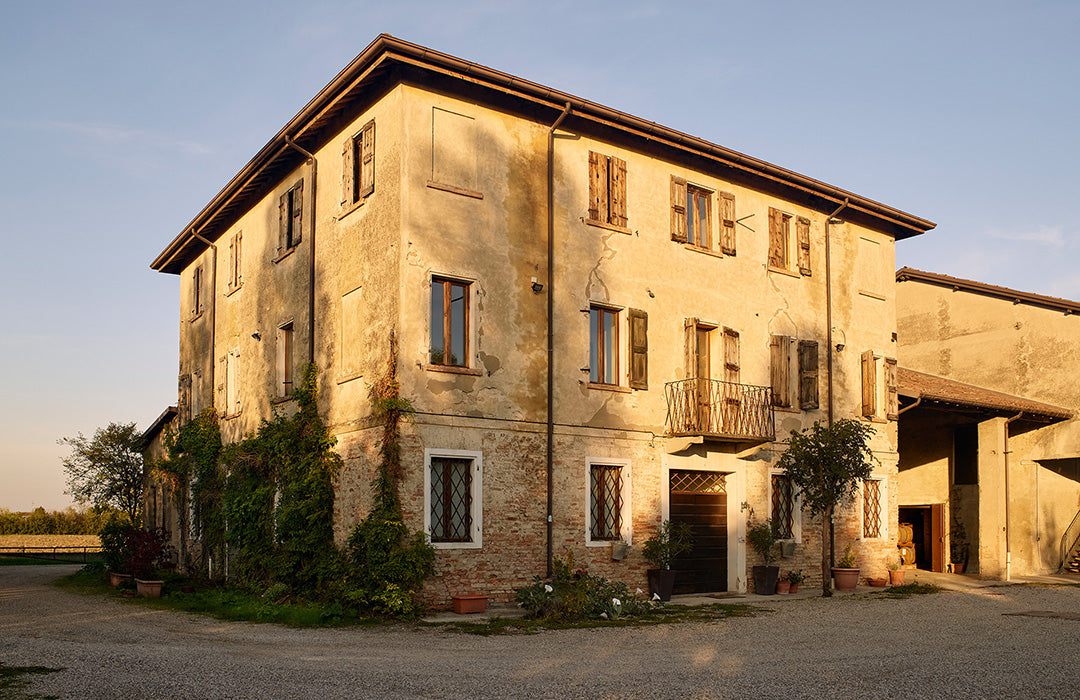
Manifest
Laws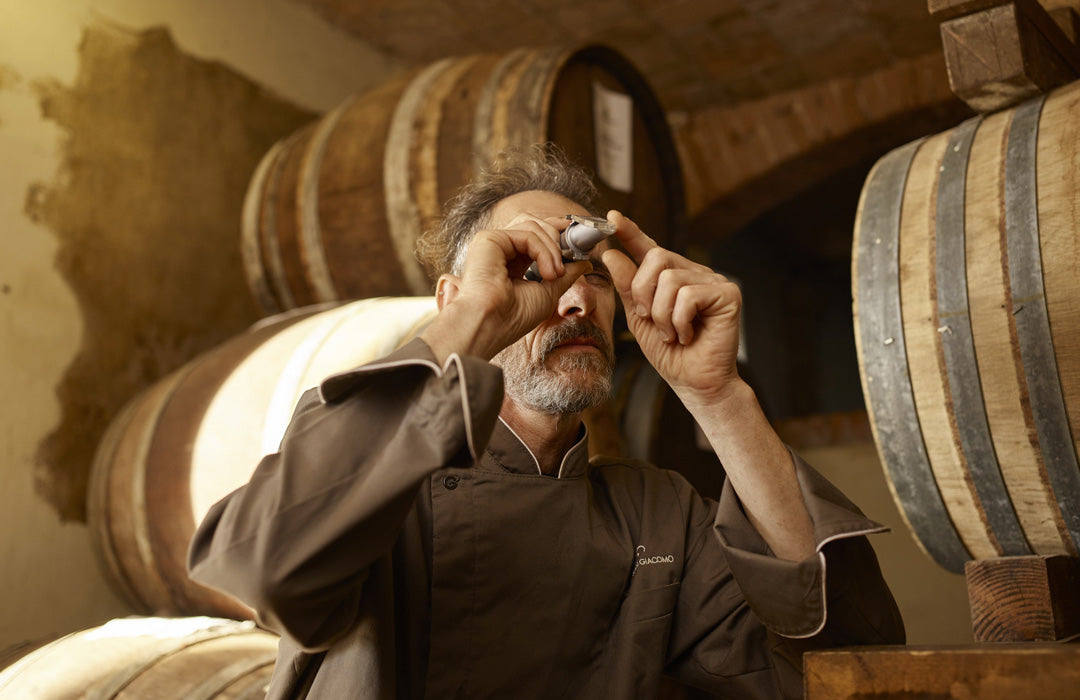
Staff
Laws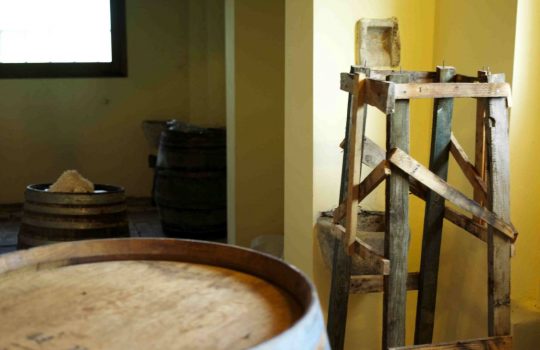
History
Laws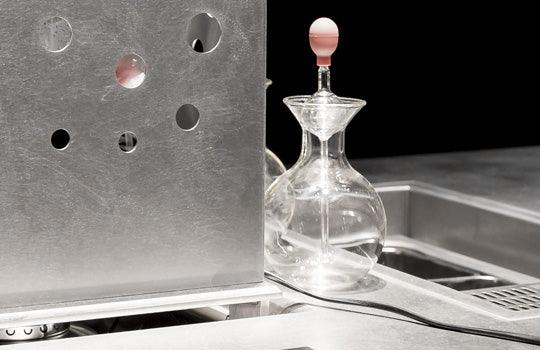
Research
Laws